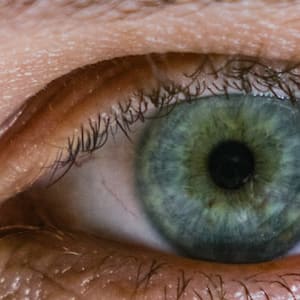all eyes: Idiom Meaning and Origin
What does ‘all eyes’ mean?
The idiom "all eyes" is used to describe a situation where everyone is watching or paying attention to someone or something. It emphasizes the intense focus and scrutiny from a group of people.

Idiom Explorer
The idiom "pay attention" means to give your full focus and concentration to something or someone. It implies being alert and actively engaging with the subject or task at hand.
The idiom "give someone the eye" means to look at someone in a way that shows interest or attraction. It is often used to describe a flirtatious or seductive look.
The idiom "eye up" means to look at or observe someone or something with interest or desire, typically in a romantic or sexual way.
The idiom "eyes on the prize" means to keep one's focus and attention on achieving a goal or desired outcome in order to be successful.
Eyes on the prize is an idiom that originated in the United States during the mid-20th century. It is a metaphorical expression used to encourage focus and determination towards achieving a desired goal. The idiom emphasizes the importance of keeping one's attention fixed on the ultimate objective, even when faced with obstacles or distractions.
The idiom "eye of the beholder" means that beauty or value is subjective and can vary from person to person, as different people have different perspectives and opinions.
The idiom "everyone and their mother" is used to emphasize that a large number of people or things are involved in a situation. It often implies that the situation is crowded, overwhelming, or exaggerated.
The idiom "everyone and their brother" is used to emphasize that a large number of people are involved in or have knowledge of a particular situation or event.
Everyone and their brother is an idiomatic expression that indicates a large number of people involved in a particular activity or event. The idiom is primarily used in American English and is often employed in a colloquial context.
The idiom "everyone and his mother" is used to emphasize the widespread or excessive presence of people. It implies that a large number of individuals, including those who may not be directly involved or relevant to a situation, are present or involved.
"Every last" is an idiom used to emphasize that every single person or thing in a group is included or accounted for. It highlights the completeness or thoroughness of an action or process.
The idiom "every last" can be related to several other idiomatic expressions in the English language. Let's explore these related idioms:
The idiom "everybody who is anybody" means that only the most important or influential people are included or recognized in a particular group or situation.
Deciphering Intense Gazes
The idiom "all eyes" is used to describe a situation in which everyone or most people are looking at or paying attention to something or someone. It indicates widespread interest, scrutiny, or focus on a particular event, individual, or topic. The phrase is commonly used in both literal and figurative contexts, and it has been used in various languages to convey a similar idea. Although the exact origin and history of this idiom are uncertain, it is believed to have emerged in the 17th century from the literal act of a group of people collectively looking at something with their eyes. Over time, it evolved into a figurative expression to convey the concept of collective attention or an intense focus on a specific subject.
In contemporary usage, the idiom "all eyes" is employed to emphasize that a significant number of people are observing or closely following a particular event or individual. It suggests a sense of shared interest and anticipation. For example, in the context of a sports event, the phrase might be used to describe the attention of the spectators being wholly directed toward a particular player's performance. In a political setting, it could signify the intense scrutiny of the media and the public on a particular politician or policy decision.
Furthermore, the use of the idiom extends beyond the collective observation of others to one's own self-consciousness. It highlights the feeling of being under scrutiny or being the center of attention. For instance, one might say they feel like "all eyes are on them" when they are giving a presentation or performing in front of a large audience.
It is worth noting that the idiom "all eyes" is often used in conjunction with other words, phrases, or prepositions to convey specific nuances of meaning. For example, "all eyes on" is a common variation that underscores the concentration of attention on someone or something. This combination of words indicates the focus and intensity of collective observation. Additionally, the idiom is frequently employed in various forms of media, including literature, news articles, and everyday conversations, illustrating its pervasive usage in contemporary English.
Another related idiom is "all ears". While "all eyes" focuses on collective observation, "all ears" emphasizes a collective focus on listening and paying attention. It signifies the interest and attentiveness of a group of people toward a particular speaker or source of information. The idiom "all ears" is often used to indicate a willingness or eagerness to listen and learn. It conveys an openness and receptiveness to new ideas or insights, similar to the way "all eyes" conveys a collective interest and attention.
Similarly, the idiom "give someone the eye" is related to the concept of collective attention. However, it has a slightly different meaning. "Give someone the eye" means to look at or observe someone with interest, often in a flirtatious or suggestive manner. It implies a certain level of attraction or intrigue. While "all eyes" describes a collective focus on someone or something, "give someone the eye" refers to an individual's act of looking at or showing interest in another person.
"pay attention" is another idiom that is related to "all eyes". It signifies the act of focusing one's awareness, concentration, and thought on something or someone. While "all eyes" implies a collective attention, "pay attention" emphasizes an individual's effort to concentrate and actively engage with a specific subject. The idiom "pay attention" is commonly used in various contexts, such as education, work, and personal relationships, to encourage or remind someone to be attentive and focused.
Furthermore, the idiom "catch someone's eye" is related to the concept of attracting attention. It means to attract someone's attention through visual or physical means. When something or someone catches someone's eye, they are drawn to it and compelled to look or pay attention. This idiom highlights the power of visual stimuli to capture and engage people's interest. Similarly, "all eyes" conveys the idea of widespread attention and interest, but "catch someone's eye" focuses on the act of attracting individual attention.
Lastly, the idiom "eagle eye" is related to the concept of attentive observation. It refers to someone who has keen and sharp vision or the ability to detect small details and nuances. When someone has an eagle eye, they are highly observant and meticulous in their observations. This idiom highlights the importance of being attentive and perceptive in order to notice and understand things that others might overlook. While "all eyes" conveys the idea of collective attention, "eagle eye" emphasizes an individual's ability to observe and comprehend information in great detail.
The idiom "all eyes" is used to describe a situation in which all or most people are looking at or paying attention to something or someone. It indicates widespread interest, scrutiny, or focus on a particular event, individual, or topic. The origin and history of this idiom are uncertain, but it is believed to have emerged in the 17th century from the literal act of a group of people collectively looking at something with their eyes. In contemporary usage, "all eyes" is employed to emphasize collective observation and shared interest. It is often used in conjunction with other words, phrases, or prepositions to convey specific nuances of meaning. Additionally, there are several related idioms, such as "all ears", "give someone the eye", "pay attention", "catch someone's eye", and "eagle eye", that are associated with the concept of attention and observation in different ways. Each of these idioms adds depth and variety to the expression of collective interest and focus. Whether describing a group of people fixated on an event or an individual feeling the weight of gaze upon themselves, the idiom "all eyes" serves as a concise and powerful expression to convey the pervasive and intense focus of attention.
Example usage
Examples of how the idiom all eyes can be used in a sentence:
1. When the performer entered the stage, the audience was all eyes on him, eager to see his act.
2. Sarah walked into the room dressed in a stunning outfit, and everyone was all eyes on her, admiring her style.
3. The teacher announced a surprise field trip, and the students were all eyes, excitedly waiting to find out where they were going.
More "Expression" idioms

